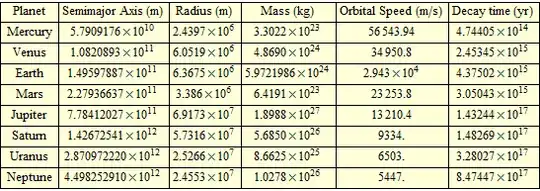This question is different from, but related to another question
How is it that the Earth's atmosphere is not “blown away”?.
In answering that question with respect to solar wind, I remarked that
the orbital speed of Earth is 30 km/s while the speed of the solar
wind varies between 300 km/s and 800 km/s in a nearly orthogonal
directions (fully orthogonal if the orbit is considered circular).
Hence the apparent wind is mostly a side wind, slightly in front (a
slightly close reach in sailing terms). As a first small angle
approximation, the dragging effect of the solar wind on the planet
orbital speed does not come from the solar wind speed, but only from
the planet own speed, which is at best a tenth of the solar wind
speed.
Hence the actual effect of the solar wind on braking down Earth orbital
speed is at best one tenth of the effect computed by Michael Brown,
which makes it even less significant.
Another point is that the pressure due to the speed of the solar wind
itself is pushing the planet outwards, away from the Sun. I am not
sure how this should be analyzed, I mean to give the best insight. One
way to do it is to consider that it reduces the centripetal force
towards the Sun due to gravity. Furthermore, its effect must also decrase like the solar wind density in proportion to
the square of the distance from the Sun, as does gravity. However the effect
is proportional to the cross-section surface of the Earth, rather than
its mass.
The energy output of the Sun is thought to have increased by about 30%
since it formation (some 4.6 billion years ago). So the pressure from
the solar wind should have increased in proportion, being equivalent
to a minute reduction of the centripetal force that keeps the Earth in
orbit. But it also increases the orbital drag in the same proportion.
This energy output should continue to increase slowly.
Note that I assumed in these last remarks that the increased output is due to a greater amount of particles being output at the same speed. Some of the energy could be due to a greater speed of the solar wind which would increase the outward push, but not the orbital drag. I do not know which actually occurs.
More detailed calculations, which I have not done, should tell which
of the two effects dominates, though they are probably both very negligible.
